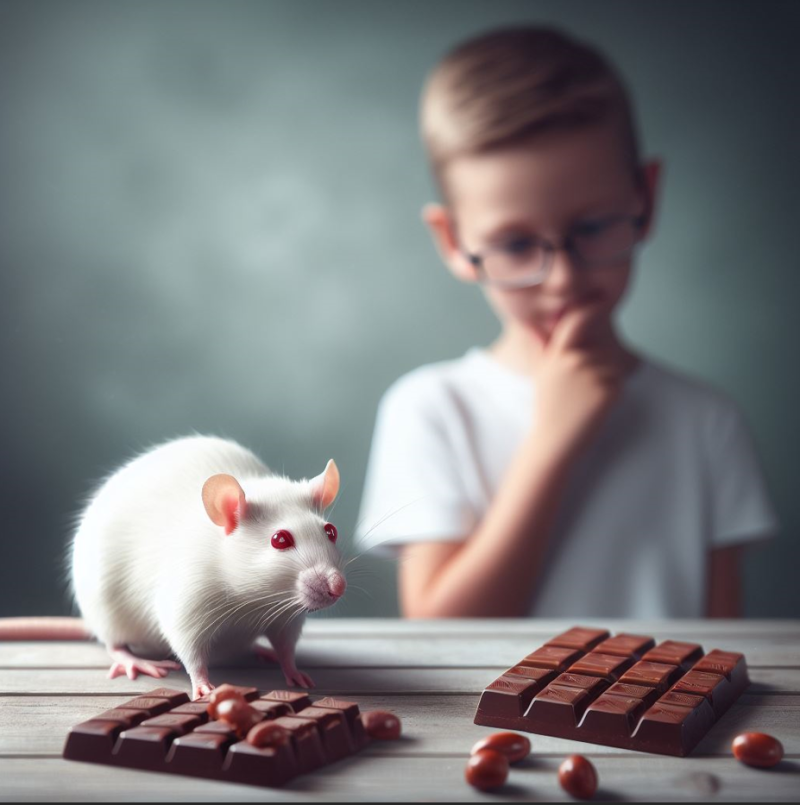
Perceptual learning refers to the process by which mere exposure to similar stimuli improves their subsequent discrimination. A clear example is that of wine tasters, who, after repeated exposure to different varieties, are able to distinguish them perfectly afterwards. This learning also seems to be involved in eating behavior and obesity. Currently, massive exposure to junk food results in better discrimination between sensorially similar foods (e.g., different types of potato chips, chocolate bars or pizzas), leading to a lack of generalization of sensory-specific satiety and thus to an increase in consumption due to the so-called "buffet effect" (Gonzalez, et al, 2018).
In the literature, it is well established that exposing two similar stimuli (AX and BX) in an interleaved fashion (AX, BX, AX, BX, BX...) improves their subsequent discrimination compared to a block exposure (AX, AX...BX, BX, BX...). This Interleaved/Block effect has been found in both human and non-human animals and suggests that the opportunity to compare between stimuli is critical for their differentiation. In two recent investigations, members of the Neuroplasticity and Learning group (http://neplegroup.com/) have explored in rats the mechanisms underlying the comparison process, and the change it produces in the representation of stimuli so that they are perceived as different.
In the first study, in collaboration with Professor Geoffrey Hall (University of York), we found that after interleaved exposure the common features (X) are less well represented, interfering less with the conditioning of other stimuli. This is because, as they are presented more frequently, they tend to habituate and receive less processing. Consequently, in a second study we observed that, after alternate exposure, the distinctive features (A and B) are better represented in memory, allowing a better discrimination of other similar stimuli, while at the same time a lower capacity to become part of new associations. In this case, the alternating presentation prevents them from becoming habituated, thus being better processed.
In conclusion, the opportunity to compare decreases generalization between similar stimuli. In the case of our current obesogenic environment, frequent exposure to a wide variety of similar snacks favors their discrimination, which ultimately results in higher consumption by preventing generalization of sensory satiation among them. However, all is not lost, since including a wide variety of healthy foods in our diet can increase their consumption by the same principle.
References
González, A., Recio, S. A., Sánchez, J., Gil, M., & de Brugada, I. (2018). Effect of exposure to similar flavours in sensory specific satiety: Implications for eating behaviour. Appetite, 127, 289–295. doi: 10.1016/j.appet.2018.05.015.
Sánchez, J., González, A., Hall, G., & de Brugada, I. (2023). The opportunity to compare similar stimuli can reduce the effectiveness of features they hold in common. Journal of Experimental Psychology: Animal Learning and Cognition, 49(2), 87–95. https://-doi.org/10.1037/xan0000349
Sánchez, J., González, A., & de Brugada, I. (2023). Intermixed rapid exposure to similar stimuli reduces the effective salience of their distinctive features. Journal of Experimental Psychology: Animal Learning and Cognition, 49(3), 151–161. https://doi.org/10.1037/xan0000355
Contact
Jesús Sánchez Plazas (jesusflea@correo.ugr.es)
Ana Gónzalez Gómez (gonzaleza@ugr.es)
Isabel de Brugada Sauras (dbrugada@ugr.es)

